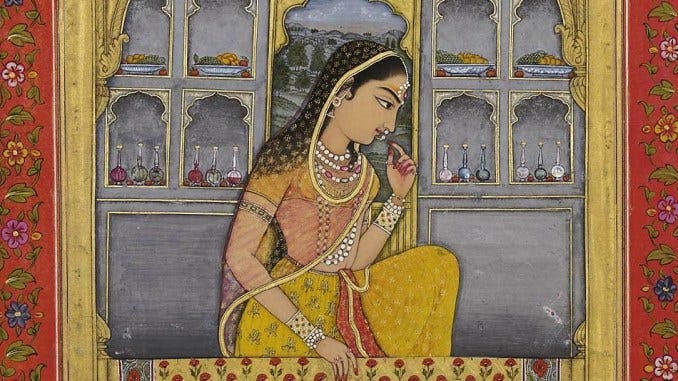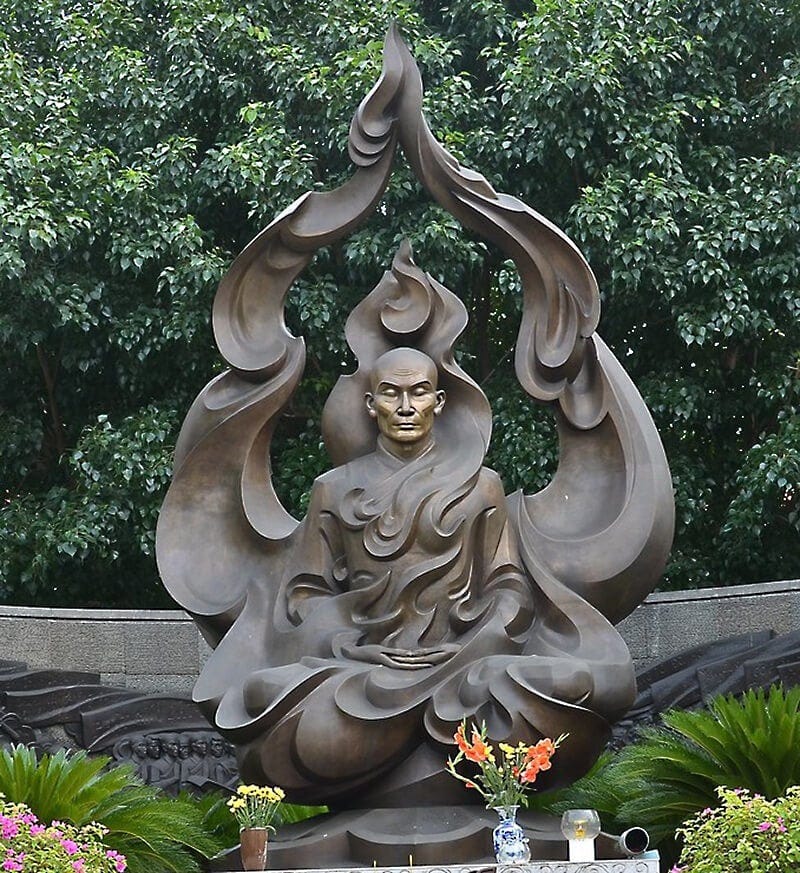The history of self immolation as a form of protest
This political act goes as far back as 14th century India and Ancient Greece.
TW: death, self immolation (there are no photos in this post of anyone on fire)
Note: This post does not promote self immolation. I look into the history of it, so we can understand the act itself a bit better. I do this so a person’s death is not in vain.
Aaron Bushnell.
He is one of many people who have protested with self immolation.
This political act goes as far back as 14th century India and Ancient Greece — but why is it used? It’s an act of pure horror — to set yourself alight, become a visual political statement, and no longer live.
And right now, so many of us are wondering: what could bring someone to believe in something with such intensity that they die, and use their death to send a message.
Aaron Bushnell left a message on a live stream to explain this. He wanted to make sure we won’t ask the question. He was clear.
“I will no longer be complicit in genocide. Free Palestine. Free Palestine. Free Palestine”.
Self immolation is considered one of the most extreme methods of protest, due to its disturbing and violent nature.
But the 14th Dalai Lama, described it as “a practice of non-violence”, since it doesn’t cause any casualties outside of the person doing it. It is considered as a protest for a collective cause, not for personal gain — but instead, to make a statement.
Many moments in history attest to this: such as Jauhar in India.
The best-known act of Jauhar in India was led by Rajput Queen Rani Padmini — she and her companions committed Jauhur in order to protect their honour and defeat their enemy, so there would be no royal women left for them to enslave, acquiring nothing but an empty fortress after their victory.
These forms of protest happened all over the world.
When Rome was defeated and Christianity became the official religion of the state of Byzantium (now known as Istanbul), a group of heretics known as the Montanists formed. They had the belief that there were new prophetic figures — two women, in fact.
This was condemned in Christianity, and so their ideology was suppressed.
Due to this, they protested by gathering in churches and setting them on fire, while still inside
I could go on — there are so many moments of self immolation in history — more than we imagined.
But it’s also our present.
On 10 June 1963, one of the most famous cases is Thích Quảng Đức.
He is the Buddhist monk who protested against the persecution of Buddhists by President Diệm, by self immolating on a busy street in Saigon.
Contents of the petrol container was emptied over Quảng Đức's head as he rotated a string of wooden prayer beads and recited the words Nam mô A Di Đà Phật ("Homage to Amitābha Buddha") before striking a match and dropping it on himself.
Quảng Đức's last words in a letter reads:
"Before closing my eyes and moving towards the vision of the Buddha, I respectfully plead to President Ngô Đình Diệm to take a mind of compassion towards the people of the nation and implement religious equality to maintain the strength of the homeland eternally. I call the venerables, reverends, members of the sangha and the lay Buddhists to organize in solidarity to make sacrifices to protect Buddhism."
The Saigon bureau chief for the Associated Press (AP) Malcolm Browne was there and took the infamous photo that many of us have seen. The photograph was used by the politically revolutionary band Rage Against the Machine for their self titled album.
American historian Ellen Hammer described the event as having "evoked dark images of persecution and horror corresponding to a profoundly Asian reality that passed the understanding of Westerners."
Within a few weeks almost a dozen more buddhist monks repeated Đức’s act of self immolation and there were daily public protests against Diệm. Four months later President Diệm was overthrown and assassinated.
When President Kennedy saw a photo of Đức’s act he was visibly shaken and said:
"No news picture in history has generated so much emotion around the world as that one."
But Aaron Bushnell wasn’t the first person to protest with self immolation over the last year.
In December 2023, an unidentified individual self-immolated outside of the Israeli consulate in Atlanta in solidarity with Palestine. The police described it as “an extreme act of political protest.”
On November 8 2023, in a video posted on Twitter, an unidentified man stands in front of a crowd in Kinshasa, the capital of the Democratic Republic of the Congo, holding a sign that reads “Stop the genocide in Congo” and sets himself on fire.
On 13 April 2023, Tunisian professional footballer Nizar Issaoui died after setting himself on fire in what Issaoui said was a protest against Tunisia's “police state”. During his funeral, demonstrators threw stones at police, who retaliated with tear gas.
Despite these histories, we see the articles printed somehow omitting the reason for Aaron Bushnell’s sacrifice.
His mental health, his beliefs, his politics have all been brought to the forefront — but what isn’t mentioned is the beliefs and politics of self immolation.
It’s powerful, terrifying, horrific and scary. It’s not something I promote, I am merely telling a brief history.
But never forget that every time we don’t pay attention to the reason of the act itself, his death has no purpose.
Because when we refuse to look at what self immolation is, Aaron’s life ends in vain.










Very poignant and relevant way of seeing current affairs!